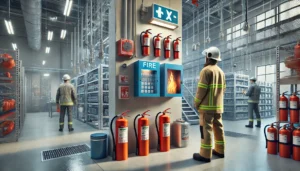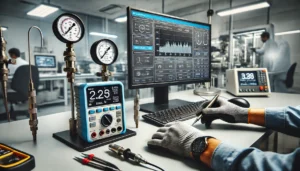Variables that affect the flange face selection include pressure, temperature and sealing requirements. In summary it can be said that the purpose of flange face selection is to facilitate the required sealing of the piping configuration. This type of pipe configuration is exposed to different working conditions. This guide attempts to define the most critical ones and complement them with their important properties, advantages and disadvantages and the most common applications and problems they solve.
Flat Face (FF) Flange
One of the simplest designs of flanges is the Flat Face flange or FF which has a completely flat interface. This type is commonly utilized in low-pressure piping systems where the joint integrity does not need to be high. Moreover, the primary advantage of FF stocking designs is that the stocked face does not require much much planning in order to assist it fully sealing using a more gasket on the shallow slopes side. The full-face gaskets make seal tightening easier for orientation hence limiting possible scenarios where the flange is twisted or fractured. Such Flanges can also be used in such systems that have a low pressure such as water pipelines and fire extinguishing or draining systems. Due to their simple design these types of flanges should not be utilized in scenarios where the pressure is high.
Raised Face (RF) Flange
It is well known that gaskets are crucial components in a multitude of assemblies. RF or raised face flange is one of the essentials with lots of functions. RF can be quite helpful in improving sealing properties of a flange connection assembly. Thanks to elbow gaskets, RF can be mounted for elbow height of 300 or 150 flanges and for Other gaskets spacing around bore RF can be adjusted for the difference between flanges. RF connection assembly can be used with various applications including submarines or in the aerospace industry or in the kayak of a paddleboard. Strong integration can prove to be challenging for RF connections as it would require more cost and machining, and if not properly aligned can lead to RF connection damage.
Ring-Type Joint (RTJ) Flange
It is perfect for high presure, high temperature applicaitions. It comprises a metallic gasket which is seated in the machined groove. This increases the metal to metal contact seal. In terms of performance and durability, this design is quite remarkable because it does not blow its gasket or fail under extreme conditions. RTJ flanges are generally used in high pressure oil and gas pipelines, offshore drilling as well as subsea installations. RTJ flanges are however more expensive and are harder to install due to their accurate machining requirements. However, once installed, they provide unmatched reliability.
Male and Female (M&F) Flange
The Male and Female (M&F) flange design incorporates a raised section (male) on one flange face and an encapsulating recess (female) on the other face. This type of design makes sure of a close contact, in most cases, with soft iron or metallic gaskets, to ensure good sealing and minimize the risk of gasket extrusion or blowout. M&F flanges are applicable in moderate to high-pressure applications such as heat exchanger transition from shell to bonnet or in some specialized oil and gas systems. Yet they might not prove so interchangeable with ordinary flat f hinges due to structural interface or plane alignment limitations.
Conclusion
It is very important to finish off one flange face before attaching it to a pipe or another flange. Flat Face (FF), Raised Face (RF), Ring-Type Joint (RTJ), Tongue and Groove (T&G), and Male and Female (M&F) are among the few types of flanges with distinct features which makes them preferable for diverse operational conditions. The usage of FF flanges will be recommended when the pressure level in the system is low. On the other hand, high-pressure systems were better suited to RF and RTJ flanges. T&G and M&F decreasing the possibility of gasket blow outs are more effective in more technological applications.
In Induskart, we have a variety of flanges that are of high quality and have been specially designed to conform to the various industrial requirements. Our products guarantee long-lasting safety and performance of the piping system, be it in low pressure water lines or high pressure off shore oil pipelines.










